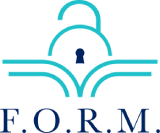Building Open Science Communities
Table of Contents
English PDF Downloads
Page Views
Building Open Science Communities
Communities are at the core of transforming how we approach open scholarship. Providing the necessary infrastructure, training, resources, and promoting collaborations, they can empower researchers and Open Science advocates to act as change agents, setting new standards and building diverse Open Science Communities on a global scale.
The Role of Open Science Communities
Open Science Communities are spaces where researchers can collaborate, learn from each other, and adopt Open Science best practices and values. These collaborations have contributed to the creation of national and regional policies that drive research dissemination and communication. Open Science seeks to make knowledge accessible, reusable, and collaborative by opening research processes to the global community. These communities identify challenges, shape policies, build infrastructure, and foster collaboration among researchers, institutions, and governments to drive scientific progress.
The Benefits of Open Science Communities
Open Science Communities play a vital role in expanding access to scientific knowledge, building inclusive infrastructures and promoting widespread adoption of open practices. By sharing publications, data, educational resources and software under open licenses, these communities ensure equitable access and reuse across borders and disciplines. They also support essential infrastructure like data repositories, preprint servers and peer review platforms, thus enabling collaboration, transparency and faster research dissemination. While early career researchers and policy shifts are driving momentum, broader adoption, especially among established researchers, depends on inclusive, community-driven efforts that embed Open Science into the fabric of academic culture.
Building Effective Open Science Communities
Building effective Open Science Communities involves addressing several challenges while implementing key strategies to ensure they thrive and achieve their goals:
Start Small and Build Purposefully
New Open Science Communities do not need to launch with expansive platforms or global reach. Begin by identifying a clear purpose, such as addressing a local research challenge, improving access to data, or fostering collaboration in a specific field. Build incrementally: Develop trust, establish shared practices, and scale up as participation and capacity grow. Starting small allows for flexibility, learning, and authentic relationships.
Prioritise Open Goals
Define what the community aims to achieve, whether it’s enhancing access to open knowledge, fostering collaboration, building Open Science infrastructures or supporting Open Science practices. Establishing clear goals will help guide the community’s activities.
Overcome Institutional Barriers
Many institutions have policies and evaluation criteria that do not align with Open Science practices, making it difficult for researchers to engage with Open Science Communities and practices. Advocating for policy changes within such institutions is crucial to drive progress.
This may include advocating for the redesign of evaluation criteria to recognize and value contributions to Open Science, such as the use of preprints, recognising peer review activities as scholarly contribution, and promoting other Open Science practices such as open data and the use of open repositories for faster research dissemination. Engaging with institutional leaders and policymakers can help drive these necessary changes.
Address Funding Constraints
Securing funding for Open Science initiatives can be challenging, especially in regions where the benefits of open infrastructures are not well understood or when projects do not align with funders’ priorities. To address this, Open Science Communities in such regions should prioritise diverse funding sources, and implement sustainable funding models. Raising awareness about the impact of Open Science can also help shift funders’ focus in such regions.
Address Language Barriers
The dominance of English in scientific communication can limit the participation of non-English speaking researchers. To overcome this, Open Science Communities should develop and provide multilingual resources, such as translated training materials and educational content. You can tailor your efforts to reflect the local language, infrastructure, cultural values, and knowledge systems. This will make it easier for individuals from different linguistic backgrounds to engage and contribute.
Offer Support
Provide resources and training to help members understand and implement Open Science practices effectively. This can include workshops, webinars, and online courses. Ensure that all participants, especially those from underrepresented regions or disciplines, have access to tools, training, and support.
Embrace Diversity
An Open Science community thrives on engagement, and should seek and encourage meaningful participation by early career researchers, established researchers, and relevant stakeholders to ensure that a variety of perspectives and experiences are explored and shared in the community. Co-create rules, acknowledge all contributions, and provide accessible pathways for involvement. Open Science is not only about access to knowledge but also about shaping how that knowledge is created and shared.
Embrace Open Science as a Process
Open Science is an evolving practice. Stay open to feedback, innovation, and iterative change. Technologies will shift, policies will evolve, and new actors will join the conversation. What matters is committing to openness, inclusivity, and ethical collaboration as enduring principles.
Conclusion
Building and sustaining Open Science Communities is essential for transforming the research landscape into one that is more inclusive, transparent, and collaborative. These communities empower individuals at every career stage to engage with and advance Open Science practices, from data sharing and multilingual access to infrastructure development and policy advocacy. While challenges such as institutional resistance, language barriers, and funding constraints remain, they can be addressed through collective action, clear goals, and a commitment to equity. As Open Science continues to evolve, communities will remain its driving force, fostering trust, innovation, and shared responsibility for how knowledge is created and disseminated.
More Resources
For further reading on Open Access Communities explore the following resources:
INOSC is an international network of local Open Science and Open Scholarship communities (OSC). OSCs are hubs where academics learn from their peers how to make their workflows more open. More and more academics are joining OSCs, ready to put Open Science to practice, and you can join them and set up your own Open Science community!

